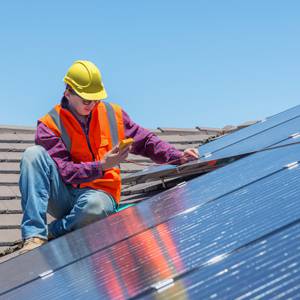There is a common misconception that solar panels can only work best in places where there is hot weather all year-round.
Not true! Solar panels will work as efficiently even in cold climates because it needs the light and not the heat of the sun to make clean energy.

Having said that, solar panels won’t be as effective as they should be on overcast weather conditions because of lack of sunlight to absorb and convert into electricity.
Are Solar Panels Recommended in Cold Climates?
Skyrocketing utilities are leaving many homeowners wondering just how high their energy bills will get in the coming years. As solar power becomes more and more affordable, it seems a wise move to design one’s home to look to the sun for energy. While skeptics would be quick to point that only those living in sunny states can benefit from this natural resource, solar panels at residential areas in cold climates are actually quite as beneficial as it can be in locations with year-round sun exposure.
According to manufacturers of solar panels, all you need to ensure is that you have at least five square meters of roof space available for the solar panels and that it is positioned wherein it can receive direct sunlight for the main part of the day.
 Solar Panel Efficiency In Cold Climates
Solar Panel Efficiency In Cold Climates
Solar panels can work effectively even in homes that experience cold climates for the most part of the year. As solar panels only need daylight to produce electricity, maximum efficiency is possible. Even in the darkest months, there are states that receive an average of at least 8 hours of daylight. However, if this is not the case in your area, solar panels can still produce around a third of their maximum output even on the least sunny days. This is quite enough already to supply your household’s demand for electricity throughout the day.
Moreover, rain and winds won’t be able to affect the effectiveness of solar panels and can even keep them clean and free of debris. Snow, on the other hand, can reduce solar output – at the moment – but since solar panels are installed at an angle, snow would easily melt and slide off quickly.
Maximizing the Sun in Cold Climates
If you have decided to go solar, the best way to maximize the sun’s energy is to ensure that the solar panels are installed with a deeper slant to make it quick and easy to rake off any harsh weather elements, such as snow, especially after heavy storms. If your home roof would not make it possible to achieve a good slope, ground installation may be considered. There are specially-designed rakes for cleaning solar panels to avoid damaging its surface.
Tips for Solar Power Users in Cold Climates
1. Install solar panels at the largest angle possible.
The steeper the slope, the lesser the possibility there is for snow accumulation on top of the solar panels. Very snowy places like northern Michigan should always aim for the highest angle possible when installing solar panels.
2. Ensure that the installation of the solar panels won’t allow snow to get stuck at the bottom.
When installing solar panels, you have to make sure that snow will fall freely to the ground. When snow gathers at the bottom of the module, this will reduce the efficiency of the solar panels.
3. Bounce a tennis ball off the solar panels to let snow slide off it.
Increase your solar panels’ energy output by bouncing a tennis ball off the snow-covered panels. As the snow shimmies its way off the panels, it creates small divots that will allow sunlight to reach the modules and begin converting energy.
Going solar can make it possible to enjoy a cost-efficient way to access energy for your home without the expensive monthly bill. And because new systems offered by many manufacturers these days are being installed to be in sync with the traditional electrical grid, you don’t have to worry about experiencing electricity interruptions especially if too much snow accumulation hinders your solar panels to make solar energy.













Write a Comment